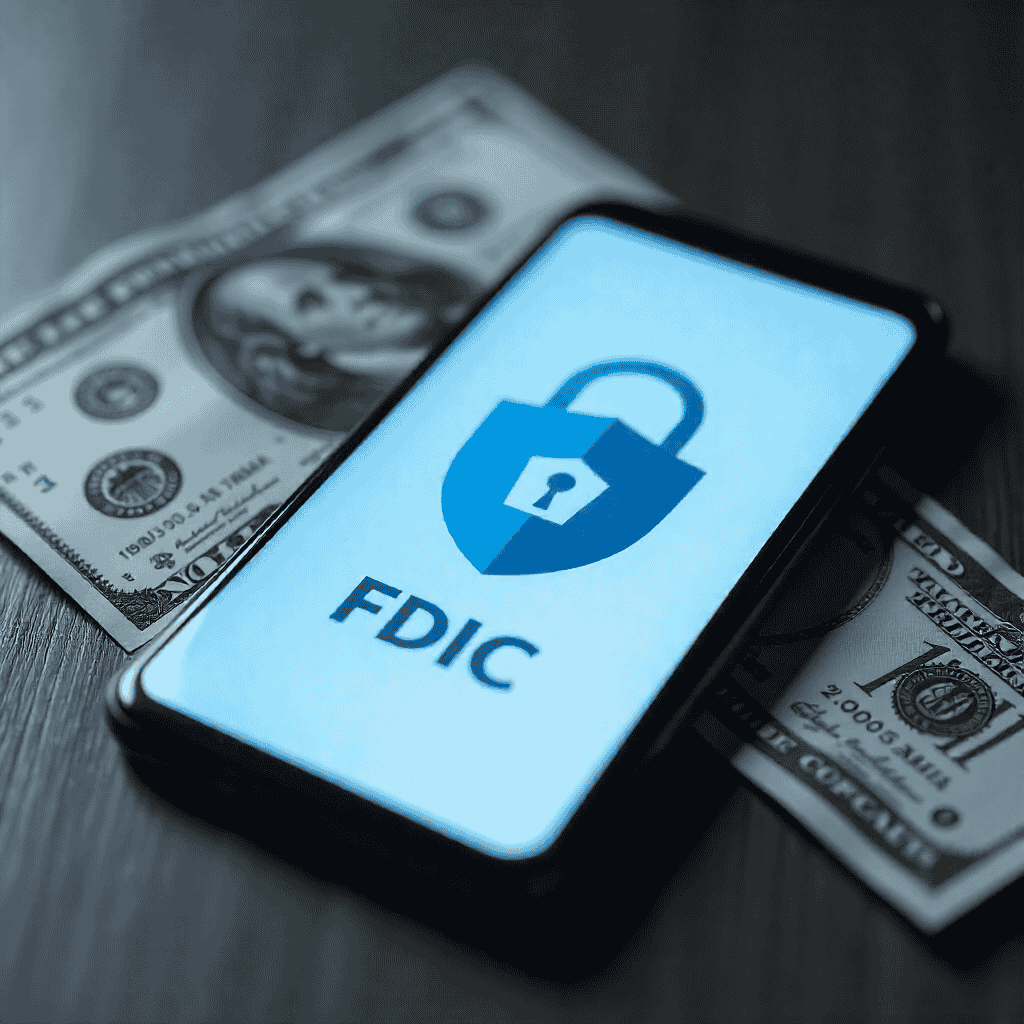
Introduction
Financial stress isn’t just a personal issue; it bleeds into the workplace, shaping focus, energy, and engagement. In the United States, workers juggle student loans, rising living costs, and planning for retirement against a backdrop of wage growth that hasn’t always kept pace with inflation. This reality makes financial wellness programs for employees not merely a perk, but a strategic lever for attracting talent, reducing turnover, and boosting performance.
Public data and research from reputable government and government-adjacent bodies underscore the need for workplace financial education and resilience. The U.S. Bureau of Labor Statistics (BLS) provides a broad labor-market context—employment trends, wage dynamics, and benefit offerings that frame why employers should care about financial health in the workforce. For example, employers increasingly recognize that benefits beyond base pay—like retirement education, debt-management support, and emergency-savings options—can influence retention and productivity. See BLS for context: https://www.bls.gov
Beyond the numbers, the Consumer Financial Protection Bureau (CFPB) has developed a practical frame for financial well-being that many organizations use to design, measure, and refine workplace programs. The CFPB’s framework emphasizes the link between money management skills, access to resources, and financial behavior that reduces stress and improves decision-making. Learn more through CFPB’s Financial Well-Being resources: https://www.consumerfinance.gov/consumer-tools/financial-well-being/
This guide is written for U.S.-based HR leaders, benefits professionals, and organizational leaders who want a credible, compliant, and scalable approach to financial wellness programs for employees. It integrates government guidance with evidence-based practices, a clear implementation roadmap, and practical measurement approaches to help you build a program that is trusted, private, and effective.
What are financial wellness programs for employees?
At their core, financial wellness programs for employees are employer-sponsored services designed to help workers manage money more effectively, reduce debt, save for emergencies, plan for retirement, and make intelligent financial decisions. These programs typically combine education with practical tools and tailored support. Core components often include:
- Financial education and coaching: Workshops, digital modules, and one-on-one coaching that cover budgeting, saving, debt management, credit health, and financial decision-making.
- Budgeting and expense tools: Apps and platforms that help employees track spending, set budgets, and monitor progress toward goals.
- Emergency savings and automated savings: Payroll-deducted savings plans and employer-supported contributions to emergency funds to build a financial cushion.
- Retirement planning support: Education about 401(k) plans and other retirement options, investment literacy, and retirement simulators.
- Debt management and student loan assistance: Guidance on debt payoff strategies and, where appropriate and compliant, employer-sponsored loan-repayment benefits.
- Payroll and benefits integration: Seamless links to existing payroll, HRIS, and benefits ecosystems so users don’t experience friction accessing services.
- Data privacy and security controls: Robust governance that protects personal financial data and aligns with privacy laws and best practices.
Why these programs matter in the U.S.
- Employee well-being and performance: Money stress is a known driver of distraction, reduced concentration, and lower engagement. Financial wellness programs aim to reduce that stress, with potential downstream effects on productivity and morale.
- Retirement readiness: A growing portion of the workforce relies on employer-sponsored programs to understand and optimize retirement accounts and planning.
- Compliance and trust: Programs built on privacy protections, clear consent, and credible providers foster trust and long-term participation.
Key government-backed resources informing program design and evaluation
- U.S. Bureau of Labor Statistics (labor-market context and the role of benefits): https://www.bls.gov
- Consumer Financial Protection Bureau (financial well-being framework and employer resources): https://www.consumerfinance.gov/consumer-tools/financial-well-being/
- U.S. Department of Labor and ERISA overview (fiduciary responsibilities and retirement plan governance): https://www.dol.gov/agencies/ebsa/about-ebsa/our-activities/resource-center/erisa-overview
- Internal Revenue Service (tax treatment of employee benefits and education assistance): https://www.irs.gov/businesses/small-businesses-self-employed/employee-benefits
- Social Security Administration (retirement income context as part of financial security): https://www.ssa.gov
- U.S. Government Accountability Office (program evaluation and evidence-based guidance): https://www.gao.gov
- Department of Health and Human Services (HIPAA/privacy guidance when health data intersects financial well-being): https://www.hhs.gov/hipaa
Section 1: Understanding financial wellness programs for employees
What they include
- Core financial education: Structured courses, workshops, digital modules, and coaching that cover budgeting, saving, debt management, credit health, and financial decision-making.
- Personal financial coaching: One-on-one sessions tailored to life stage, income level, debt, and retirement goals.
- Budgeting and expense tools: User-friendly budgeting dashboards, cash-flow analysis, and real-time progress tracking.
- Emergency savings and automated savings: Payroll-deducted savings accounts, employer contributions to emergency funds, and automatic escalation of savings when pay increases occur.
- Retirement planning support: Education about 401(k) plans and other retirement vehicles, investment education, and retirement simulation scenarios to illustrate outcomes under different contribution levels.
- Debt relief and student loan assistance: Guidance on effective debt payoff strategies and, where feasible and compliant, employer-supported student loan repayment programs.
- Payroll integration and benefits synergy: Seamless alignment with HRIS, payroll, and benefits ecosystems so workers can easily access services without duplication of efforts.
- Privacy and security controls: Clear policies on data collection, use, retention, consent, and control for employees.
Why it’s more than “a perk”
A successful financial wellness program is embedded in the employee experience. It’s not a one-off benefit; it’s a set of integrated services that align with HR, benefits strategy, and company culture. True programs rely on evidence-based approaches and measurable outcomes, and they strive to be inclusive of diverse incomes, life stages, and financial goals.
Section 2: The business value of financial wellness programs for employees
ROI and business outcomes
- Productivity and engagement: By reducing money-related distraction, employees can focus more fully on tasks, innovation, and collaboration.
- Retention and talent attraction: Financial wellness benefits can differentiate employers in competitive labor markets, contributing to lower turnover and more robust recruiting.
- Healthcare and total-cost-of-care implications: Financial stress is linked to health outcomes; reducing stress can influence healthcare utilization and long-term costs.
- Absenteeism and presenteeism: Financial stress can manifest as missed days or reduced performance on the job; wellness programs can mitigate these effects.
- Financial literacy and plan participation: Employees who understand finances are more likely to participate in retirement plans and other employer-sponsored programs, improving overall financial resilience.
Evidence sources and governance
- CFPB’s framework for financial well-being guides measurement design and intervention strategies: https://www.consumerfinance.gov/consumer-tools/financial-well-being/
- BLS context around wages, benefits, and workforce dynamics provides a backdrop for program design and benchmarking: https://www.bls.gov
- ERISA guidance for plan governance and fiduciary responsibilities helps ensure compliance and proper program administration: https://www.dol.gov/agencies/ebsa/about-ebsa/our-activities/resource-center/erisa-overview
Section 3: Core components of highly effective programs
1. Personal financial coaching and education
- One-on-one coaching addresses debt payoff, retirement readiness, budgeting, and savings goals; face-to-face or virtual coaching can be tailored to each employee’s situation.
- Group workshops and digital courses complement coaching, enabling scalable reach across a multi-site or remote workforce.
2. Budgeting tools and expense tracking
- Interactive budgeting templates and dashboards empower employees to set realistic targets and visualize progress over time.
- Real-time feedback, dashboards, and nudges help sustain engagement and adherence to budgets.
3. Debt management and loan repayment support
- Debt payoff strategies (e.g., avalanche vs. snowball methods), consolidation guidance, and, where permissible, loan repayment assistance programs can reduce the burden of high-interest debt.
4. Emergency savings and automated savings
- Payroll-deducted emergency savings accounts with employer matching or contributions help workers build resilience against unexpected financial shocks.
- Automated savings features that adjust with pay cycles help preserve discipline and consistency.
5. Retirement education and plan participation
- Education on 401(k) options, contribution levels, and investment choices improves enrollment and long-term outcomes.
- Simulations illustrate how different contribution rates affect retirement readiness, encouraging proactive saving behavior.
6. Tax-advantaged benefits and education
- Some components of financial wellness programs may have tax-advantaged treatment and reporting requirements. See IRS guidance for details on employee benefits: https://www.irs.gov/businesses/small-businesses-self-employed/employee-benefits
7. Privacy, security, and data governance
- Clear privacy policies and consent mechanisms, data minimization, and secure data handling are essential to sustain trust and compliance.
Section 4: Compliance, privacy, and legal considerations in the U.S.
- ERISA and retirement-plan oversight: If you sponsor or administer retirement plans, ensure alignment with ERISA fiduciary responsibilities and plan governance standards. See ERISA overview: https://www.dol.gov/agencies/ebsa/about-ebsa/our-activities/resource-center/erisa-overview
- Tax treatment of benefits: Employer-sponsored programs may have tax implications for employers and employees. See IRS guidance on employee benefits: https://www.irs.gov/businesses/small-businesses-self-employed/employee-benefits
- Data privacy and security: When handling financial data, apply privacy protections consistent with federal and state laws, plus industry best practices.
- HIPAA considerations: If health-related financial well-being data intersects with health information, privacy protections under HIPAA apply. See HIPAA guidance: https://www.hhs.gov/hipaa
- Education-related benefits and deductions: If your program includes education benefits, review IRS rules for tax treatment and reporting.
- Voluntariness and nondiscrimination: Ensure participation is voluntary and that access is equitable across the workforce to avoid discrimination concerns.
Practical compliance steps
- Start with a needs assessment using voluntary participation and clear consent processes.
- Engage with plan sponsors and fiduciaries to ensure alignment with ERISA and other applicable rules.
- Implement a data governance policy that limits sensitive data collection to what is necessary, with transparent employee consent and clear retention policies.
- Communicate tax treatment and eligibility clearly; provide employees with access to authoritative IRS guidance as needed.
- Establish privacy safeguards before deployment, including data security measures and incident response protocols.
Section 5: Measuring success and ROI
A robust measurement framework captures quantitative and qualitative outcomes. Use a balanced scorecard approach with a baseline and ongoing monitoring.
Hard metrics
- Participation and enrollment rates across education, coaching, and savings programs.
- Changes in turnover or cost-per-hire post-implementation.
- Absenteeism and presenteeism indicators (days missed, productivity metrics, quality measures).
- Employer health-care claim trends related to stress-related conditions (with privacy-preserving approaches and aggregated data).
Soft metrics
- Employee engagement and morale indicators (pulse surveys, focus-group insights).
- Perceived financial stress levels (quantified via validated financial well-being scales).
- Net Promoter Score (NPS) related to the workplace experience and benefits satisfaction.
ROI and measurement approach
- Begin with a baseline before launch: current 401(k) participation rates, debt levels, emergency-savings access, and stress indicators.
- Use a phased rollout (pilot then broader deployment) to isolate impact and refine.
- Tie measurement to program components (coaching impact on debt, education on retirement plan participation, emergency-savings uptake).
- Ensure privacy and confidentiality in data collection; report aggregated outcomes only.
Government-backed guidance to inform measurement
- CFPB’s financial well-being framework helps shape measurement of well-being and design interventions: https://www.consumerfinance.gov/consumer-tools/financial-well-being/
- BLS data can contextualize workforce metrics and how benefits influence productivity and retention: https://www.bls.gov
Section 6: How to implement an effective program
A practical blueprint for HR and benefits leaders
Step 1 — Define objectives and success metrics
- Clarify primary goals (e.g., higher 401(k) participation, improved debt management outcomes, reduced stress-related absenteeism) and establish baseline measurements.
Step 2 — Assess workforce needs
- Conduct anonymous surveys and focus groups across roles, income levels, and life stages to identify pain points and preferred formats.
- Benchmark against peer organizations and regulators’ guidance to maintain alignment with best practices.
Step 3 — Design the program mix
- Start with core offerings: coaching, budgeting tools, emergency savings, retirement education, and debt-management support.
- Consider add-ons such as student loan repayment assistance or educator-specific programs where feasible and compliant.
- Build an inclusive design that accommodates diverse earnings, life stages, and cultural backgrounds.
Step 4 — Select trusted partners
- Engage with certified financial planners or fiduciary-advised vendors who have workplace wellness expertise and strong privacy practices.
- Ensure partners have robust privacy standards and transparent data-sharing terms.
Step 5 — Communicate clearly and inclusively
- Deploy a multi-channel communication plan that explains benefits, privacy protections, eligibility, and access steps.
- Use language that reduces stigma and respects diverse financial experiences.
Step 6 — Pilot and scale
- Run a controlled pilot with a single department or location, measure outcomes, and iterate before a broader rollout.
Step 7 — Integrate with existing benefits
- Tie financial wellness to retirement plans, emergency-savings programs, health plans, and mental well-being resources to reinforce a holistic approach.
Step 8 — Govern and measure
- Create a governance framework, assign ownership, and establish a cadence for reporting ROI and program effectiveness.
- Preserve employee privacy by aggregating data and seeking ongoing consent for any data reuse.
Section 7: Real-world patterns and case examples
Leading employers often structure their programs as a three-pillar approach: education, personalized coaching, and savings enablement. The most successful programs tend to demonstrate executive sponsorship, integration with core benefits (like pension plans and health plans), strong privacy safeguards, and ongoing education that is accessible to all employees, including non-English speakers or those with varying literacy levels.
Note on case data
- Publicly available government sources typically provide frameworks, guidance, and evidence-based approaches rather than raw numerical ROI figures for individual employer programs. To ensure credibility, align your design with ERISA guidance, IRS tax considerations, and CFPB well-being frameworks, and benchmark against industry peers using publicly reported initiatives where possible.
Section 8: The future of employee financial wellness
- Personalization through technology: AI-enabled budgeting and coaching platforms can tailor recommendations while preserving privacy and control over data access.
- Expanded program design: Employers are increasingly integrating financial wellness with broader well-being initiatives, including mental health support and liquidity-focused counseling for near-term needs.
- Regulatory evolution: Stay attuned to potential changes in ERISA rules, privacy regulations, and tax provisions that could affect how employer-provided financial benefits are structured and reported.
- Accessibility and inclusion: Programs that meet employees where they are—across languages, literacy levels, and digital access—will be more effective and equitable.
Section 9: A practical, ready-to-use starter plan for your organization
Phase 1 (0–60 days): Discovery and governance
- Conduct a needs assessment with voluntary participation and consent.
- Define objectives and success metrics; establish baseline data on 401(k) enrollment, savings access, and stress indicators.
- Identify core components to deploy in the initial phase (coaching, budgeting tools, emergency savings).
- Draft privacy and data governance policies; define data-sharing limits and consent mechanisms.
Phase 2 (60–180 days): Pilot implementation
- Launch a pilot program with a subset of employees, offering coaching, budgeting tools, and emergency-savings access.
- Provide clear communications about privacy protections, eligibility, and how to access services.
- Collect feedback, adjust the program design, and begin tracking baseline ROI metrics.
Phase 3 (180+ days): Broader rollout and refinement
- Expand to additional divisions or locations, incorporating debt-management support or student loan assistance where appropriate.
- Integrate with retirement education and plan communications to boost participation and engagement.
- Refine governance and reporting, with regular updates to leadership on ROI and program outcomes.
Phase 4 (Ongoing): Sustainment and evolution
- Update content and services to reflect changes in laws, tax provisions, and market conditions.
- Maintain accessibility and inclusion efforts, including multilingual resources and alternative formats.
- Continue to monitor privacy protections, data security, and consent practices to preserve trust.
Starter checklist (ready-to-use)
- Define goals, metrics, and baselines (401(k) participation, debt metrics, stress indicators).
- Select core components (coaching, budgeting, emergency savings) and a feasible add-on plan (debt-management, loan repayment assistance).
- Establish a privacy framework with a data governance policy.
- Choose reputable partners with demonstrated privacy controls and fiduciary care.
- Create transparent communications that explain benefits, access, and privacy protections.
- Implement a pilot with a clear measurement plan and a path to scale.
FAQ (search-friendly, helpful answers)
Q: What are financial wellness programs for employees?
A: They are employer-sponsored services that help workers manage money, reduce debt, save for emergencies, plan for retirement, and improve financial decision-making.
Q: How do these programs improve business outcomes?
A: By reducing money-related stress and increasing engagement, retention, and plan participation, which can translate into higher productivity and lower costs over time.
Q: Are financial wellness programs legally required?
A: There is no federal mandate requiring them, but they must comply with applicable laws (ERISA for retirement plans, IRS rules for tax treatment, privacy laws). See ERISA overview for guidance: https://www.dol.gov/agencies/ebsa/about-ebsa/our-activities/resource-center/erisa-overview
Q: Can employer benefits have tax advantages?
A: Some components may be tax-advantaged; consult IRS guidance on employee benefits: https://www.irs.gov/businesses/small-businesses-self-employed/employee-benefits
Q: Where can I find government guidance on financial well-being?
A: The CFPB’s Financial Well-Being resources are a good starting point: https://www.consumerfinance.gov/consumer-tools/financial-well-being/
Conclusion
Financial wellness programs for employees represent a strategic alignment of people, process, and policy. They respond to real employee needs, comply with established legal frameworks, and offer a path to meaningful business outcomes—improved engagement, retention, and productivity, alongside a more financially secure workforce. By starting with a clear needs assessment, prioritizing core components, ensuring privacy and compliance, and adopting a disciplined approach to measurement and iteration, your organization can build a program that’s credible, scalable, and genuinely beneficial for both employees and the business.
READ MORE:
- How to Apply for Section 8 Housing in the USA
- How to Budget for Beginners: A Complete Step-by-Step Money Management Guide
- High-Interest Savings Account with No Fees: Smart Move for Your Money




























